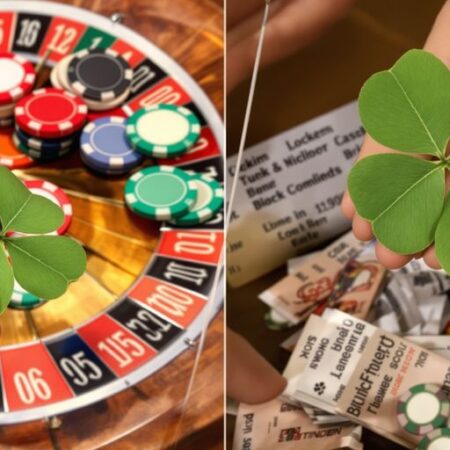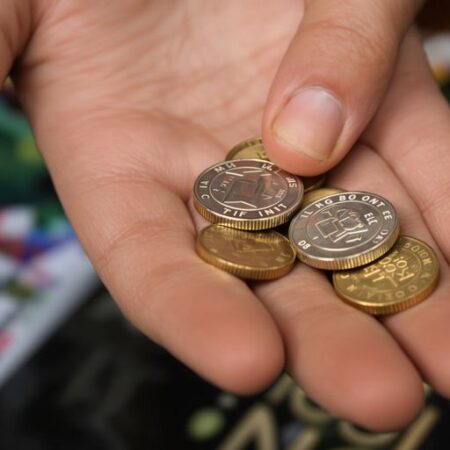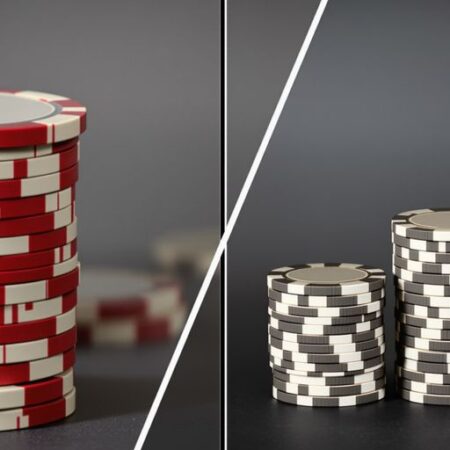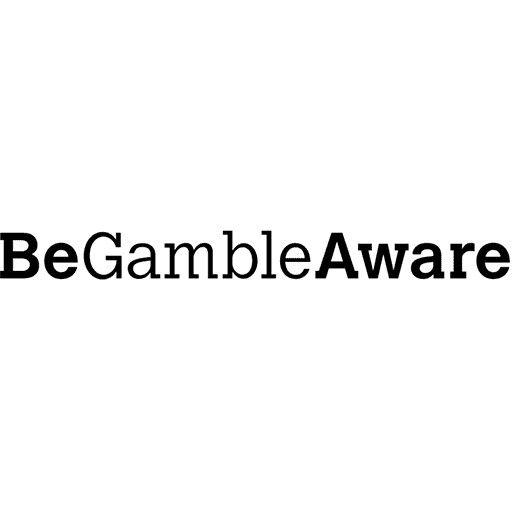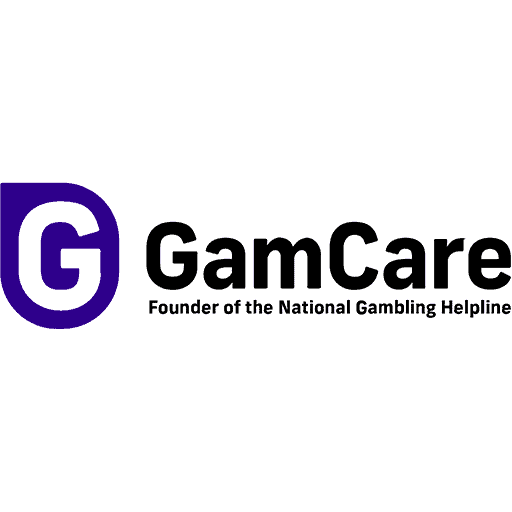To truly dominate betting Dota 2, players need to master a variety of tactics and understand the game’s intricate mechanics.
This guide will walk you through essential strategies that can elevate your chances of winning big.
The Best Dota 2 Betting Sites in 2025
Wagering requirement: 30x (bonus + deposit). Minimum deposit: $10. No bonus code is needed.
Any bets placed in Poker or Craps will not qualify
Understanding Dota 2 Mechanics
Core Gameplay Elements
Dota 2, at its heart, is a game of calculated aggression and strategic defence. We need to grasp the basics: destroying the enemy’s Ancient while protecting our own. It sounds simple, but the devil is in the details. Resource management, experience gain, and map control all play huge roles. Understanding these core elements is the first step to becoming a better player. It’s not just about clicking buttons; it’s about understanding the underlying systems that govern the game.
Hero Roles and Responsibilities
Every hero in Dota 2 has a role to play, and understanding these roles is key to team success. Some heroes are designed to soak up damage and initiate fights, while others excel at dealing damage from a distance or supporting their allies. We must learn to identify our hero’s strengths and weaknesses and play accordingly. Are we the carry who needs to farm for late-game dominance, or are we the support who needs to ensure our carry’s survival? Knowing our role dictates our item choices, positioning, and overall game plan. It’s a team effort, and we all have a part to play.
Map Awareness and Control
Map awareness is more than just glancing at the minimap; it’s about understanding where our enemies are, where they might be going, and what they’re likely to do. Warding key locations gives us vision and allows us to anticipate enemy movements. Controlling strategic areas of the map, like Roshan’s pit or the enemy jungle, gives us a significant advantage. We need to constantly gather information and use it to make informed decisions. Are we pushing our advantage, or are we playing defensively to protect our towers? The map is our greatest source of information, and we must learn to read it effectively.
Mastering Hero Selection
Choosing the Right Heroes
Picking heroes is not just about who looks cool. Players need to think about what the team needs. It’s like putting together a puzzle; every piece has to fit.
The enemy team must be considered too. Are they heavy on magic damage? We may need some magic resistance. It’s all about making smart choices before the game even starts.
Synergies and Counters
Some heroes just work better together. Think about combos. If we have a hero that can stun enemies, we may pick another hero that deals a ton of damage to stunned targets.
But also, we need to think about counters. If the other team picks a hero that’s strong against one of our heroes, we might need to adjust our picks. It’s a constant back-and-forth, trying to outsmart the other team.
Adapting to Team Composition
Sometimes, things don’t go as planned. Maybe someone picks a hero we didn’t expect, or the other team throws us a curveball. That’s when we need to be flexible. We may have to change our role or pick a hero that we’re not comfortable with. The important thing is to work together and make the best of the situation. A good team can adapt to anything.
Effective Communication in Dota 2
Using Voice and Text Chat
You can be the best player in the world, but if you can’t tell your team what you’re doing, you’re probably going to have a bad time.
Voice chat is great for quick calls, like “Roshan now!” or “I’m TPing top!” But sometimes, text chat is better for explaining more complex ideas or strategies. Finding the right balance between the two is key.
Don’t spam, don’t flame, and use whatever language your team agrees on.
Pinging for Coordination
Pings are your best friend. They’re quick, they’re easy, and they can convey a ton of information without you having to type a single word.
Need help in your lane? Ping it. See an enemy ward? Ping it. Want to suggest a gank? Ping it. The ping wheel is super useful for specifying what you want to do. Just remember that too many pings can be annoying, so use them wisely.
Establishing Game Plans
Before the horn even blows, we should be talking about what we want to do. What’s our general strategy? Who’s going to farm, and who’s going to gank? What lanes are we prioritizing? A little bit of planning can go a long way. And it’s not just at the start of the game, either. As the game goes on, we need to adapt our plans based on what’s happening. Are we ahead? Let’s push our advantage. Are we behind? Let’s play defensively and try to farm up. Having a clear game plan helps everyone stay on the same page and work together towards a common goal.
Strategic Itemization Techniques
Core vs. Situational Items
We need to think about what our hero needs to function. Core items are the bread and butter, the stuff that makes our hero actually work. Think of it like this: a carry needs damage, a support needs ways to help the team. But then there are situational items. Are they stacking magic resist? It’s time for a nullifier. Is someone elusive? Maybe a bloodthorn. It’s all about adapting.
Timing Your Purchases
When we buy items matters just as much as what we buy. Power spikes are real. Getting that blink dagger a few minutes before the other team expects it can lead to easy pickoffs and snowballing. We should always be thinking about when we can hit key item timings.
Understanding Item Synergies
Some items just go together like peanut butter and jelly. A shadow blade inWe mayolator on certain heroes? Deadly. A glimmer cape on a hero with strong heals? It’s annoying to deal with. We need to understand how items interact with each other and with our hero’s abilities. It’s not enough to just buy good items; we need to buy items that make each other even better. Think about how items amplify our hero’s strengths and cover their weaknesses. That’s the key.
Positioning for Success
Staying Safe in Team Fights
Team fights in Dota 2 can be super chaotic. It’s easy to get caught out of position and just die. We’ve all been there, right? One thing we should always try to do is hang back a bit, especially if we’re playing a support or a ranged damage dealer. Think of it like this: we’re trying to deal damage without becoming the main target. It’s about finding that sweet spot where we’re effective but not exposed.
Flanking and Ambushing
Flanking and ambushing are great ways to catch the enemy off guard. Instead of just running straight at them, try to go around the side or even behind them. This works best when we have some kind of vision advantage, like a ward placed in the right spot. When we flank, the enemy has to split their attention, and that can create opportunities for our team to capitalize. It’s all about being unpredictable and making the enemy uncomfortable.
Utilizing Terrain to Your Advantage
The Dota 2 map isn’t just a flat surface; it’s got high ground, low ground, trees, and all sorts of stuff we can use. High ground gives us a vision advantage and makes it harder for the enemy to hit us. Trees can provide cover for ambushes or escapes. We should always be thinking about how we can use the terrain to our advantage. It can make a huge difference in a fight.
Advanced Farming Strategies
Last Hitting and Denying
Last hitting and denying is controlling the lane equilibrium and starving your opponent. We need to focus on getting those last hits, obviously, but don’t forget to deny our own creeps when they’re low. It’s a simple way to reduce the gold and experience your opponent gets. It’s a constant battle for resources, and every little bit counts.
Efficient Jungle Farming
Jungle farming is a whole different beast. It’s not just about mindlessly hitting creeps; it’s about efficiency. We need to plan our routes, know when to stack camps, and understand which camps give the most gold and experience. Some heroes are way better at jungling than others, so we should pick accordingly. Also, keep an eye on the lanes. If there’s an opportunity to gank or help a teammate, we should take it. Don’t just sit in the jungle all game.
Stacking and Pulling Camps
Stacking and pulling camps is where things get interesting. Stacking involves pulling neutral camps so that more than one spawns at the same location. Pulling involves dragging neutral creeps into the lane to disrupt the creep equilibrium and provide us with extra farm. It’s tricky to get the timing right, but once we do, it can really boost our gold income. Plus, it can help our laners get an advantage. Just be careful not to mess up the lane too much, or our carry will be mad.
Team Fight Dynamics
Initiating and Counter-Initiating
Team fights in Dota 2 can be chaotic, but understanding how to start them – or how to respond when the enemy jumps on you – is super important.
A good initiation can set the tone for the entire fight, giving your team a huge advantage. Think about heroes with abilities that can lock down enemies or disrupt their positioning.
On the flip side, knowing how to counter-initiate – using abilities to turn the fight around when you’re caught off guard – can save your team from disaster. It’s all about timing and knowing your heroes’ capabilities.
Target Prioritization
Okay, so the fight’s started. Now what? Figuring out who to focus on is key.
Do you go for the enemy carry who’s dishing out tons of damage, or do you try to take out their support heroes who are keeping everyone alive? Usually, it’s a mix of both. Identifying the biggest threats and coordinating with your team to eliminate them quickly can swing the fight in your favour.
Sometimes, it’s better to focus fire on one target at a time rather than spreading damage around.
Using Ultimates Effectively
Ultimate abilities are, well, ultimate for a reason. They can change the course of a team fight in an instant. But just popping them off as soon as you see an enemy isn’t always the best idea. Think about when and where to use them. Are you using Black Hole to catch as many heroes as possible? Are you saving your Winter’s Curse to protect your carry from a deadly attack? Coordinating your ultimates with your team and using them at the right moment can make all the difference.
Map Control and Vision
Warding and Dewarding
Warding is super important. It’s how we get vision, and vision wins games. We need to place wards in smart spots to see enemy movements and anticipate ganks. But it’s not just about placing wards; we also have to deward. Removing enemy wards denies them vision and gives us a huge advantage. It’s a constant back-and-forth, placing and removing, trying to outsmart the other team.
Controlling Key Areas
Think about the map as a series of important spots. These could be Roshan’s pit, the entrances to our jungle, or even just high ground areas. If we control these spots, we control the flow of the game. It lets us farm safely, push lanes effectively, and set up ganks. It’s all about area denial, making it hard for the enemy to move around freely.
Using Smoke Ganks
Smoke of Deceit is our secret weapon. It lets us move around the map undetected, setting up surprise attacks. A well-executed smoke gank can completely turn the tide of a game. We need to coordinate our smoke ganks, making sure everyone knows the target and the plan. It’s risky, but the reward is often worth it.
Adapting to the Meta
Understanding Patch Changes
Keeping up with the latest patch notes is super important. We need to know what’s been buffed, nerfed, or reworked. Seriously, ignoring this is like going into a test without studying. We should read the notes carefully and think about how these changes will affect our hero choices, item builds, and overall strategies. It’s not just about knowing what changed, but understanding why and how to use that knowledge to our advantage.
Identifying Strong Heroes
Some heroes are just better than others in the current meta. It’s our job to figure out who those heroes are. This means watching pro games, checking out high-MMR pub matches, and experimenting ourselves. We should pay attention to pick rates, win rates, and how effective certain heroes are in different roles. If we see a hero dominating, we should either learn to play them or figure out how to counter them. It’s all about staying ahead of the curve.
Adjusting Strategies Accordingly
Once we understand the patch changes and know which heroes are strong, we need to adjust our strategies. This might mean changing our hero pool, trying new item builds, or adapting our playstyle. The meta is always evolving, so we can’t get stuck in our ways. We should be willing to experiment, take risks, and learn from our mistakes. If something isn’t working, we need to be able to identify it and make changes quickly. Being adaptable is key to long-term success in Dota 2.
Learning from the Pros
Watching Professional Matches
We can all agree that watching professional Dota 2 matches is like attending a masterclass. It’s not just about seeing flashy plays; it’s about understanding the underlying strategies that drive those plays. Pay attention to how pros rotate, when they choose to fight, and how they manage their resources. It’s easy to get caught up in the excitement, but try to focus on the decision-making process behind each action.
Analyzing Gameplay Strategies
You’ve watched a bunch of pro games. Now what? It’s time to put on your analyst hat. Don’t just passively watch; actively analyze. What heroes are being picked consistently? What items are they building, and why? How are they using the map to their advantage? Try to identify the key strategies that are working at the highest level of play. You might be surprised at how much you can learn by simply breaking down a replay.
Incorporating New Techniques
Alright, you’ve watched, you’ve analyzed, now it’s time to implement. The real challenge comes when you try to incorporate those pro-level techniques into your own games. Start small. Pick one or two things you’ve learned and focus on applying them consistently. Don’t expect to become a pro overnight, but with practice and dedication, you can definitely improve your gameplay by learning from the best.
Mental Resilience and Focus
Dota 2 can be a real test, not just of skill, but of your mental game too. It’s easy to get frustrated when things aren’t going your way, but learning to manage that frustration is key to improving. We’ve all been there – a bad game, a toxic teammate, or just plain bad luck. The difference between a good player and a great one is how they handle those situations.
Staying Calm Under Pressure
Keeping a cool head when the stakes are high is super important. It’s about recognizing when you’re starting to feel stressed and having strategies to calm yourself down. It could be taking a deep breath, focusing on your immediate tasks, or just muting that one teammate who’s tilted off the face of the earth. Don’t let the pressure get to you; instead, use it to sharpen your focus.
Dealing with Tilt
Tilt is a real thing, and it can ruin your game. It’s that feeling of frustration and anger that makes you play worse and worse. The first step is recognizing when you’re tilting. Are you making rash decisions? Are you blaming your teammates? Once you realize it, take a break. Seriously, step away from the game for a few minutes. Do something else, clear your head, and come back when you’re feeling more level-headed. Don’t keep queuing if you’re just going to feed.
Maintaining a Positive Mindset
A positive attitude can make a huge difference. Even if you’re losing, try to focus on what you can learn from the game. Encourage your teammates, even if they’re struggling. Remember, it’s just a game, and the goal is to have fun and improve. A positive mindset not only makes the game more enjoyable but also helps you make better decisions and play more effectively.
Building a Strong Team Culture
Encouraging Teamwork
We’ve all been there: solo queue can be a real mixed bag. But when we’re playing as a team, it’s a whole different ballgame. Actively encouraging teamwork means more than just saying “good job” after a successful gank. It’s about creating an environment where everyone feels comfortable sharing ideas, suggesting strategies, and coordinating movements. We can do this by initiating discussions before the game even starts, talking about potential hero synergies, and planning our early game approach. It’s about making sure everyone is on the same page, working towards a common goal. This collaborative spirit is what separates a group of players from a true team.
Fostering a Supportive Environment
Dota 2 can be intense, and let’s be honest, sometimes things don’t go our way. Maybe someone makes a mistake, misses a crucial skillshot, or gets caught out of position. It happens. But how we react to those situations defines our team culture. Instead of flaming or blaming, we should focus on providing constructive feedback and support. A simple “no worries, we’ll get ’em next time” can go a long way in keeping morale high. We should celebrate each other’s successes, big or small, and offer encouragement during tough times. A supportive environment helps us learn from our mistakes and grow as players, together.
Learning from Mistakes Together
Nobody’s perfect, and we’re all going to make mistakes. The key is to learn from them. After a game, win or lose, we should review what happened and identify areas where we could have done better. This isn’t about pointing fingers; it’s about having an open and honest discussion about our gameplay. What could we have warded better? Did we miss any opportunities to rotate? Were our item builds optimal? By analyzing our mistakes together, we can develop a better understanding of the game and improve our decision-making skills. This process of continuous learning is essential for long-term success in Dota 2.
Final Thoughts on Mastering Dota 2
Getting the hang of Dota 2 is no small feat, but it’s definitely worth it. As you learn the ins and outs of your favourite heroes, like Visage or Invoker, you’ll find that every match is a chance to improve. Keep practicing your skills, communicate with your team, and don’t shy away from trying new strategies. Remember, even the pros started somewhere. So, gear up, dive into the action, and enjoy the thrill of the game. The battlefield is waiting for you, and with the right mindset, you can truly make your mark.
Frequently Asked Questions
What are the basic mechanics of Dota 2?
Dota 2 is a multiplayer online battle arena game where two teams of five players compete to destroy each other’s base. Players control heroes with unique abilities and work together to achieve victory.
How do I choose the right hero for my team?
Selecting a hero depends on your team’s needs and the enemy’s picks. Look for heroes that complement your team composition and counter the opponents.
What is the importance of communication in Dota 2?
Good communication helps coordinate strategies and tactics among teammates, making it easier to execute plans and respond to enemy actions.
What items should I prioritize during a match?
Focus on core items that enhance your hero’s strengths. Situational items can be added based on the game’s progress and the enemy’s composition.
How can I improve my positioning in fights?
Stay at the edges of battles to avoid getting caught. Use your hero’s abilities effectively while maintaining a safe distance from enemies.
What are some advanced farming techniques?
Master last hitting and denying creeps, efficiently farm the jungle, and learn to stack and pull camps to maximize gold and experience.
How do I control the map and vision?
Place wards in strategic locations to gain vision and control key areas. Use dewarding to remove enemy vision and set up ambushes.
What can I learn from professional players?
Watch professional matches to see how top players handle different situations. Analyze their strategies and try to apply what you learn in your own games.







